- Home
- James A. Michener
The Source: A Novel
The Source: A Novel Read online
Praise for The Source
“Fascinating … Stunning … A wonderful rampage through history.”
—The New York Times
“A sweeping chronology filled with excitement—pagan ritual, the clash of armies, ancient and modern: the evolving drama of man’s faith.”
—The Philadelphia Inquirer
“Magnificent … A superlative piece of writing both in scope and technique. It is, in fact, one of the great books of this generation.… It will hold the interest of any reader, no matter what religion he may be.”
—San Francisco Call-Bulletin
“While he fascinates and engrosses, Michener also educates.”
—Los Angeles Times
“Michener is a superb storyteller.”
—Business Week
JAMES A. MICHENER, one of the world’s most popular writers, was the author of the Pulitzer Prize–winning Tales of the South Pacific, the bestselling novels Hawaii, Texas, Chesapeake, The Covenant, and Alaska, and the memoir The World Is My Home. Michener served on the advisory council to NASA and the International Broadcast Board, which oversees the Voice of America. Among dozens of awards and honors, he received America’s highest civilian award, the Presidential Medal of Freedom, in 1977, and an award from the President’s Committee on the Arts and Humanities in 1983 for his commitment to art in America. Michener died in 1997 at the age of ninety.
ALSO BY JAMES A. MICHENER
Tales of the South Pacific
The Fires of Spring
Return to Paradise
The Voice of Asia
The Bridges at Toko-Ri
Sayonara
The Floating World
The Bridge at Andau
Hawaii
Report of the County Chairman
Caravans
Iberia
Presidential Lottery
The Quality of Life
Kent State: What Happened and Why
The Drifters
A Michener Miscellany: 1950–1970
Centennial
Sports in America
Chesapeake
The Covenant
Space
Poland
Texas
Legacy
Alaska
Journey
Caribbean
The Eagle and the Raven
Pilgrimage
The Novel
The World Is My Home: A Memoir
James A. Michener’s Writer’s Handbook
Mexico
Creatures of the Kingdom
Recessional
Miracle in Seville
This Noble Land: My Vision for America
With A. Grove Day:
Rascals in Paradise
With John Kings:
Six Days in Havana
2002 Random House Trade Paperback Edition
Copyright © 1965 by Marjay Productions, Inc.
Copyright renewed © 1993 by James A. Michener and Random House, Inc.
All rights reserved under International and Pan-American Copyright Conventions.
Published in the United States by Random House Trade Paperbacks, an imprint of The Random House Publishing Group, a division of Random House, Inc., New York, and simultaneously in Canada by Random House of Canada Limited, Toronto.
RANDOM HOUSE TRADE PAPERBACKS and colophon are trademarks of Random House, Inc.
This work was originally published in hardcover by Random House in 1965.
Library of Congress Cataloging-in-Publication Data
Michener, James A. (James Albert), 1907–1997.
The source: a novel / James A. Michener.
p. cm.
eISBN: 978-0-307-54712-5
1. Jews—Fiction. I. Title.
PS3525.119 S57 2002
813′.54—dc21 2002021313
Random House website address: www.atrandom.com
Maps and Diagrams by Jean-Paul Tremblay
v3.1_r1
ACKNOWLEDGMENTS
The translations of Psalm 6 on this page and of Proverbs 31 on this page–this page are from Samuel Sandmel, The Hebrew Scriptures, An Introduction to Their Literature and Religious Ideas (New York, Alfred A. Knopf, 1963). Psalm 33 on this page was specially translated by Dr. Sandmel. The Psalms of Ascent on this page–this page were translated for this book by scholars in Israel.
Other Biblical quotations are from the King James Version, except the words of St. Paul on this page, which are taken from II Timothy 4:7–8 in the Revised Standard Version, and those passages from Deuteronomy specifically noted on this page–this page, which are from The Torah, the Five Books of Moses. A new translation of The Holy Scriptures according to the Masoretic Text (Philadelphia, The Jewish Publication Society of America, 1962).
The response which appears on this page–this page has been adapted with permission from Rabbi Ephraim Oshry, Responsa from the Depths (Brooklyn, 1959).
Archaelogical drawings used throughout the book are the work of Ruth Ovadia, research scholar in the Department of Archaeology, Hebrew University, Jerusalem. Four of these drawings were adapted from illustrations in The Guide to Israel, by Zev Vilnay (Jerusalem, 1963).
Certain Jewish documents are cited from C. K. Barrett, The New Testament Background: Selected Documents (New York, Harper and Brothers, 1961).
Direct quotations from the sayings of Rabbi Akiba have been adapted either from the tractate Pirke Abot of the Mishna or from the excellent life by Louis Finkelstein, Akiba, Saint, Scholar and Martyr (reprinted by arrangement with World Publishing Co., New York—A Meridian Book).
Quotations from and references to the Pirke Abot tractate of the Mishna are taken principally from Judah Goldin, The Living Talmud (New York, The New American Library, 1957).
Quotations from and references to the Babylonian Talmud are taken principally from Leo Auerbach, The Babylonian Talmud (New York, Philosophical Library, 1944).
Quotations from and references to the Jerusalem Talmud are taken principally from Dagobert Runes, The Talmud of Jerusalem (New York, Philosophical Library, 1956).
Quotations from Maimonides have been for the most part adapted from Leon Roth, The Guide for the Perplexed: Moses Maimonides (London, Hutchinson’s University Library, 1947).
For the list which opens the second section of Level III, I am indebted to Professor Cecil Roth of Jerusalem, who drew my attention to the fact that a list like this originally appeared in a little-known work, Wolf’s Jews in the Canary Islands. Roth’s version of this list appears in his History of the Marranos, by Cecil Roth (reprinted by arrangement with World Publishing Co., New York—A Meridian Book).
Details of Judenstrasse life appearing in the third part of Level III are verified principally by Marvin Lowenthal, The Jews of Germany (New York, Longmans, Green, 1936). By permission of David McKay Co., Inc.
Contents
Cover
About the Author
Other Books by This Author
Title Page
Copyright
Acknowledgments
The Tell
The Bee Eater
Of Death and Life
An Old Man and His God
Psalm of the Hoopoe Bird
The Voice of Gomer
In the Gymnasium
King of the Jews
Yigal and His Three Generals
The Law
A Day in the Life of a Desert Rider
Volkmar
The Fires of Ma Coeur
The Saintly Men of Safed
Twilight of an Empire
Rebbe Itzik and the Sabra
The Tell
This is a novel. Its characters and scenes are imaginary except as noted. The hero, Rabbi Akiba, was a real man who died
as described in 137 C.E. All quotations ascribed to him can be verified. King David and Abishag, Herod the Great and his family, General Petronius, Emperor Vespasian, General Josephus and Dr. Maimonides were also real persons and quotations ascribed to the last are also verifiable.
Akko, Zefat and Tiberias are existing places in the Galilee and descriptions of these towns are accurate, but Makor, its site, its history and its excavation are wholly imaginary.
The Tell
The tell of Makor at site 17072584 in western Galilee as seen by archaeologists on Sunday morning, May 3, 1964, while standing in the olive grove to the south. From the visual appearance of the tell nothing could be deduced as to its genesis, construction or history, except that the uniformly smooth surface of the slope would suggest that at some time around the year 1700 B.C.E. it could have been paved with heavy stone blocks by Hyksos invaders moving against Egypt from the north; and the slight rise toward the eastern side of the tell might indicate that there had once been a building of some size standing at that point.
On Tuesday the freighter steamed through the Straits of Gibraltar and for five days plowed eastward through the Mediterranean, past islands and peninsulas rich in history, so that on Saturday night the steward advised Dr. Cullinane, “If you wish an early sight of the Holy Land you must be up at dawn.” The steward was Italian and was reluctant to use the name Israel. For him, good Catholic that he was, it would always be the Holy Land.
Some time before dawn Cullinane heard a rapping on his door and went on deck while the stars were still bright, but as the moon fell away toward areas he had left, the sun began to rise over the land he was seeking, and the crown of stars that hung over Israel glimmered fitfully and faded. The shoreline became visible, mauve hills in the gray dawn, and he saw three things he knew: to the left the white Muslim mosque of Akko, in the center the golden dome of the Bahai temple, and to the right, high on a hill, the brown battlements of the Catholic Carmelites.
“Just like the Jews,” he said. “Denied religious liberty by all, they extend it to everyone.” He thought that might be a good motto for the new state, but as the freighter approached land he added, “I’d feel more like a traveler to Israel if they’d let me see one good synagogue.” But the Jewish religion was an internal thing, a system for organizing life rather than building edifices, and no Jewish religious structures were visible.
Even at the dockside his introduction to the Jewish state was postponed, for the first man who recognized him was a genial, good-looking Arab in his late thirties, dressed nattily in western clothes, who called from the shore in English, “Welcome! Welcome! Everything’s ready.” Two generations of British and American archaeologists had been greeted with this heartening call, either by the present Jemail Tabari or by his famous uncle, Mahmoud, who had worked on most of the historic digs in the area. Dr. Cullinane, from the Biblical Museum in Chicago, was reassured.
For many years he had dreamed of excavating one of the silent mounds in the Holy Land, perhaps even to uncover additional clues to the history of man and his gods as they interacted in this ancient land; and as he waited for the freighter to tie up he looked across the bay to Akko, that jewel of a seaport, where so much of the history he was about to probe had started. Phoenicians, Greeks, Romans, Arabs, and finally Richard the Lion Heart and his Crusaders had all come to that harbor in glorious panoply, and to follow in their footsteps was for an archaeologist like Cullinane a privilege. “I hope I do a good job,” he whispered.
As soon as he cleared the papers for the ponderous amount of equipment stored in the freighter—the books, the chemicals, the photographic equipment, the little Diesel locomotive, the thousand things a layman would not think of—he ran down the gangplank and embraced Tabari, and the Arab reported, “Things couldn’t be going better. Dr. Bar-El will be here shortly. The other Americans are already dug in, and the photographer is flying down from London this afternoon.”
“Weather been good?” Cullinane asked. He was a lean, tall man just entering his forties, an Irish Catholic educated at Harvard and Grenoble, with excavation experience in Arizona, Egypt and the area south of Jerusalem. Under normal circumstances it would have been unlikely for a Catholic to head such a dig, for the earlier field directors of the Biblical Museum had usually been Protestant clergymen, but the bulk of the money for this particular dig had come from a Chicago Jew who had said, “Isn’t it about time we had a professional doing the work?” and Cullinane had been agreed upon, particularly since he spoke Hebrew, a little Arabic and French. He was the crop-headed type of new scholar, solidly trained and not given to nonsense. On his departure from Chicago, loaded with gear, he had been asked by a newspaperman if he expected to dig up any records which would prove that the Bible was true. Cullinane replied, “No, we’re not out to help God steady the ark.” The impudent reply had been widely quoted, but when the businessman who had put up the quarter of a million dollars for the dig saw the wisecrack he felt reassured that his money was in sober hands.
“Weather’s flawless,” the Arab replied, speaking with the fluent ease of a man whose father had been Sir Tewfik Tabari O.B.E., K.B.E., one of the Arab leaders whom the British had trusted. Sir Tewfik had sent his son to Oxford, hoping that he would want to follow him in the civil service, but the boy had from the first been enchanted by his Uncle Mahmoud’s work in digging up history, and his professors at Oxford had turned him into a first-rate scientific archaeologist. In the winter of 1948, when the Jews threatened to capture Palestine from the Arabs, young Jemail, then twenty-two, had debated a long time as to what he should do. He ended by making a typical Tabari choice: he stayed in Akko and fought the Jews vigorously. Then, when his haphazard army was crushed, he announced that he would not seek asylum in Egypt or Syria. He would stay in Israel, where he had always lived, and would work with the Jews to rebuild the war-torn land. As a result of this bold decision he found himself popular and almost the only trained Arab available for the many archaeological excavations that were proliferating throughout the country. His presence at any site meant that the highest scientific standards would be enforced and that good spirits would be preserved among the workmen, who said of him, “Jemail once dug twenty feet straight down using only a camel’s-hair brush.”
As the two friends talked a jeep squealed its brakes outside the customs area, and the driver, a petite young woman in her mid-thirties, jumped out and ran past the protesting guard to give Cullinane a leaping kiss. “Shalom, John! It’s so wonderful to have you back.” She was Dr. Vered Bar-El, Israel’s top expert in dating pottery sherds, and without her assistance Dr. Cullinane’s dig could not succeed; for she had the unusual capacity to memorize the scores of scientific reports issued during the twentieth century, so that whenever someone like Cullinane or Tabari handed her a fragment of pottery, a sherd left by some household accident that had occurred seven thousand years ago, she could usually look at the piece, then summon from her extraordinary memory pieces of similar construction found in Egypt or Jericho or Beit Mirsim. Archaeologists of five countries called her “our walking calendar,” and the commendable thing about her work was that when she did not know she said so. She was a small woman, beautiful, bright-eyed, a pleasure to have at any dig. She was also one of the first major experts who had been trained wholly in Israel: when the state came into being in 1948 she was but seventeen, and had later attended Hebrew University in Jerusalem.
“Leave the gear where it is,” she said with a musical Hebrew accent. “I’ve brought along two of the crew, and they’ll stand guard till it’s unloaded. Right now let’s head for the dig. I’m hungry to get started.” She led. Cullinane to the jeep and with deft turns of the wheel soon had him on the ancient road that led from Akko to Zefat, and beyond that to Damascus, the capital of Syria.
As they entered this classic road—for some five thousand years a major east-west artery through which had flowed the contributions of Asia on their way to Venice and Genoa—Cullinane took pains t
o orient himself. “Could you stop the jeep for a moment?” he asked Mrs. Bar-El. “I’m sorry, but if I get mixed up at the start I never get straightened out later.” He got out of the jeep, studied his field map, turned firmly toward the direction from which they had come, and said, “Straight ahead to the west is Akko and the Mediterranean. To my right, the Crusader castle of Starkenberg. To my left, Jerusalem. Behind me, to the east, the Sea of Galilee. And if you continue in the direction the car’s headed you reach Zefat and, far beyond it, Damascus. Right?”
“Roger over,” Tabari said, but he thought it strange that in the Holy Land a man should orient himself by facing away from Jerusalem.
For some miles the riders discussed the coming dig and the allocations of work that had been agreed upon. “The photographer coming down from London is excellent,” Cullinane assured his colleagues. “Chap who did such good work at Jericho. And our architect is top-notch. University of Pennsylvania. I haven’t seen any drawings done by the girl you’ve chosen for draftsman. Is she capable?”
“She was good enough for Yigael Yadin at Hazor,” Dr. Bar-El explained.
“Oh, that the girl? How’d you get her?”
“We’re training some great artists in this country,” the little pottery expert said, and Cullinane thought: I must remember to titillate their national pride. I must. Aloud he said, “If we’ve got the girl who did the art work for Hazor, we’re lucky.”
“We are lucky,” Dr. Bar-El said, almost defensively.
Now all grew quiet as they neared the point from which the mound to be excavated would first be seen. Cullinane leaned forward, tense with excitement. To the north substantial hills appeared, and from time unremembered they had protected this road from the marauders of Lebanon. To the south matching hills were beginning to rise, offering security in that direction. A small valley was thus being formed, and along its northern edge short, sharp fingers of rock jutted out like opened hands, warding off anyone who might want to attack the ancient lifeline along which so much wealth had traveled. Dr. Bar-El turned a corner, straightened out the jeep, and drove for a few minutes. Then it loomed ahead—the mysterious target.

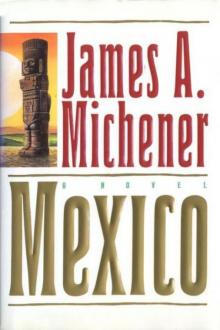 Mexico
Mexico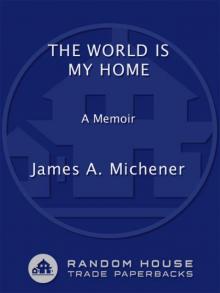 The World Is My Home: A Memoir
The World Is My Home: A Memoir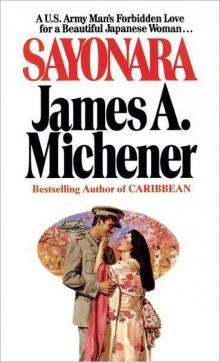 Sayonara
Sayonara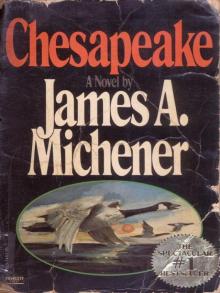 Chesapeake
Chesapeake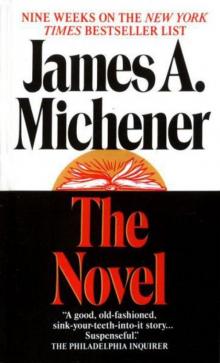 The Novel
The Novel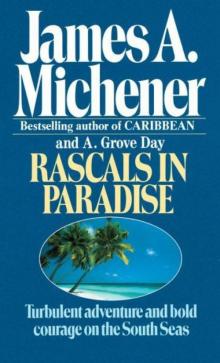 Rascals in Paradise
Rascals in Paradise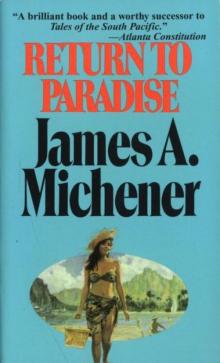 Return to Paradise
Return to Paradise Presidential Lottery: The Reckless Gamble in Our Electoral System
Presidential Lottery: The Reckless Gamble in Our Electoral System The Source
The Source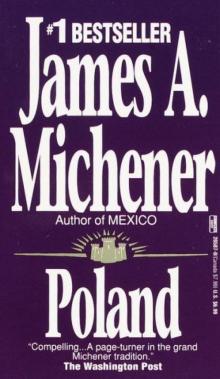 Poland
Poland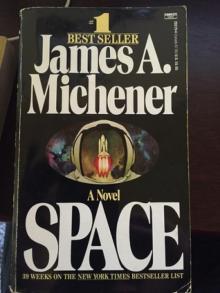 Space
Space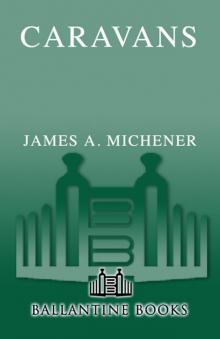 Caravans
Caravans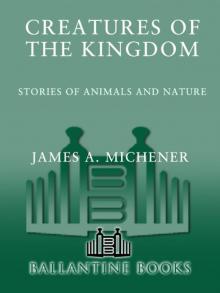 Creatures of the Kingdom: Stories of Animals and Nature
Creatures of the Kingdom: Stories of Animals and Nature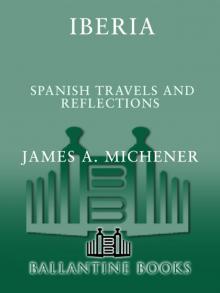 Iberia
Iberia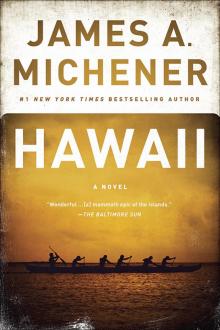 Hawaii
Hawaii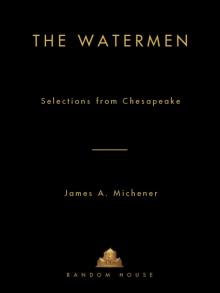 The Watermen: Selections From Chesapeake
The Watermen: Selections From Chesapeake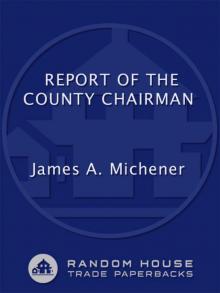 Report of the County Chairman
Report of the County Chairman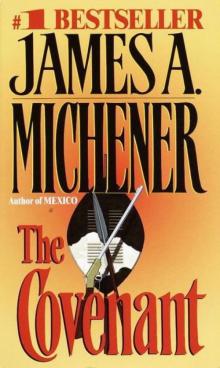 The Covenant
The Covenant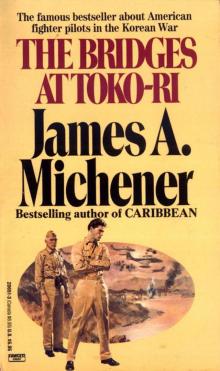 The Bridges at Toko-ri
The Bridges at Toko-ri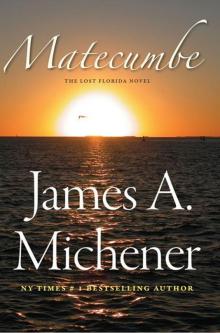 Matecumbe
Matecumbe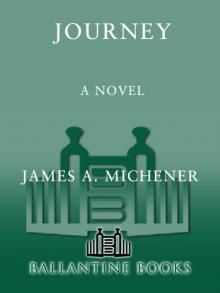 Journey: A Novel
Journey: A Novel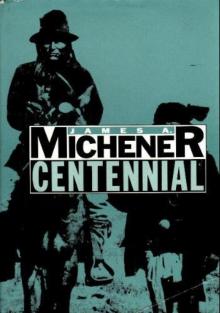 Centennial
Centennial Sports in America
Sports in America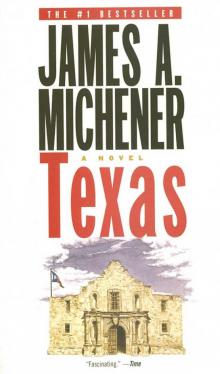 Texas
Texas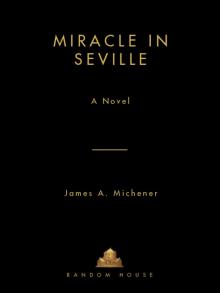 Miracle in Seville
Miracle in Seville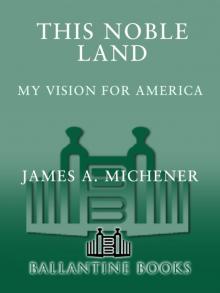 This Noble Land: My Vision for America
This Noble Land: My Vision for America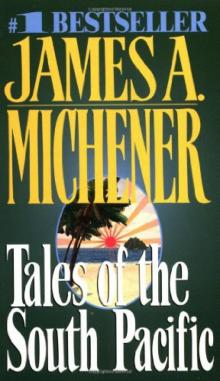 Tales of the South Pacific
Tales of the South Pacific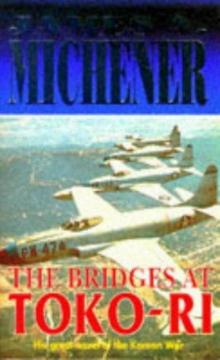 Bridges at Toko-Ri
Bridges at Toko-Ri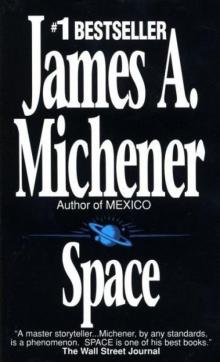 Space: A Novel
Space: A Novel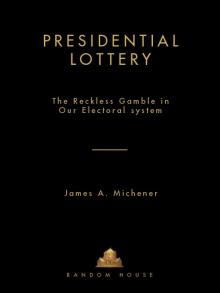 Presidential Lottery
Presidential Lottery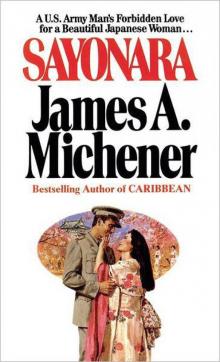 Sayonara: A Novel
Sayonara: A Novel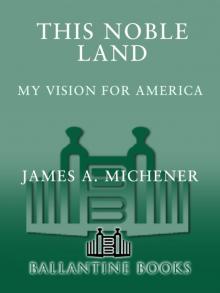 This Noble Land
This Noble Land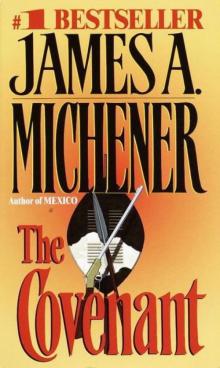 The Covenant: A Novel
The Covenant: A Novel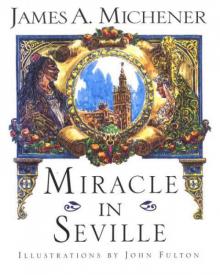 Miracle in Seville: A Novel
Miracle in Seville: A Novel The Bridge at Andau
The Bridge at Andau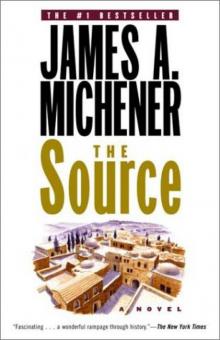 Source
Source The Source: A Novel
The Source: A Novel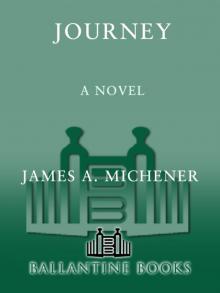 Journey
Journey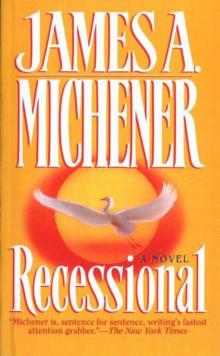 Recessional: A Novel
Recessional: A Novel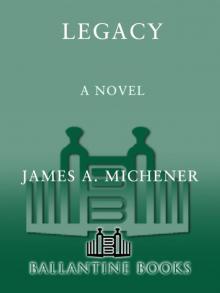 Legacy: A Novel
Legacy: A Novel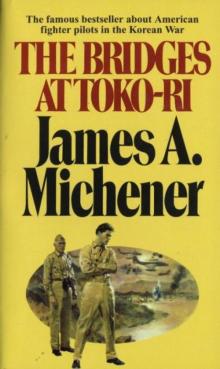 The Bridges at Toko-Ri: A Novel
The Bridges at Toko-Ri: A Novel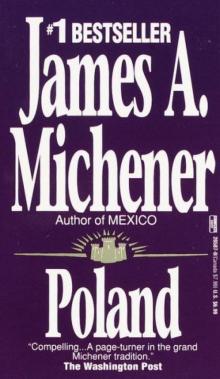 Poland: A Novel
Poland: A Novel